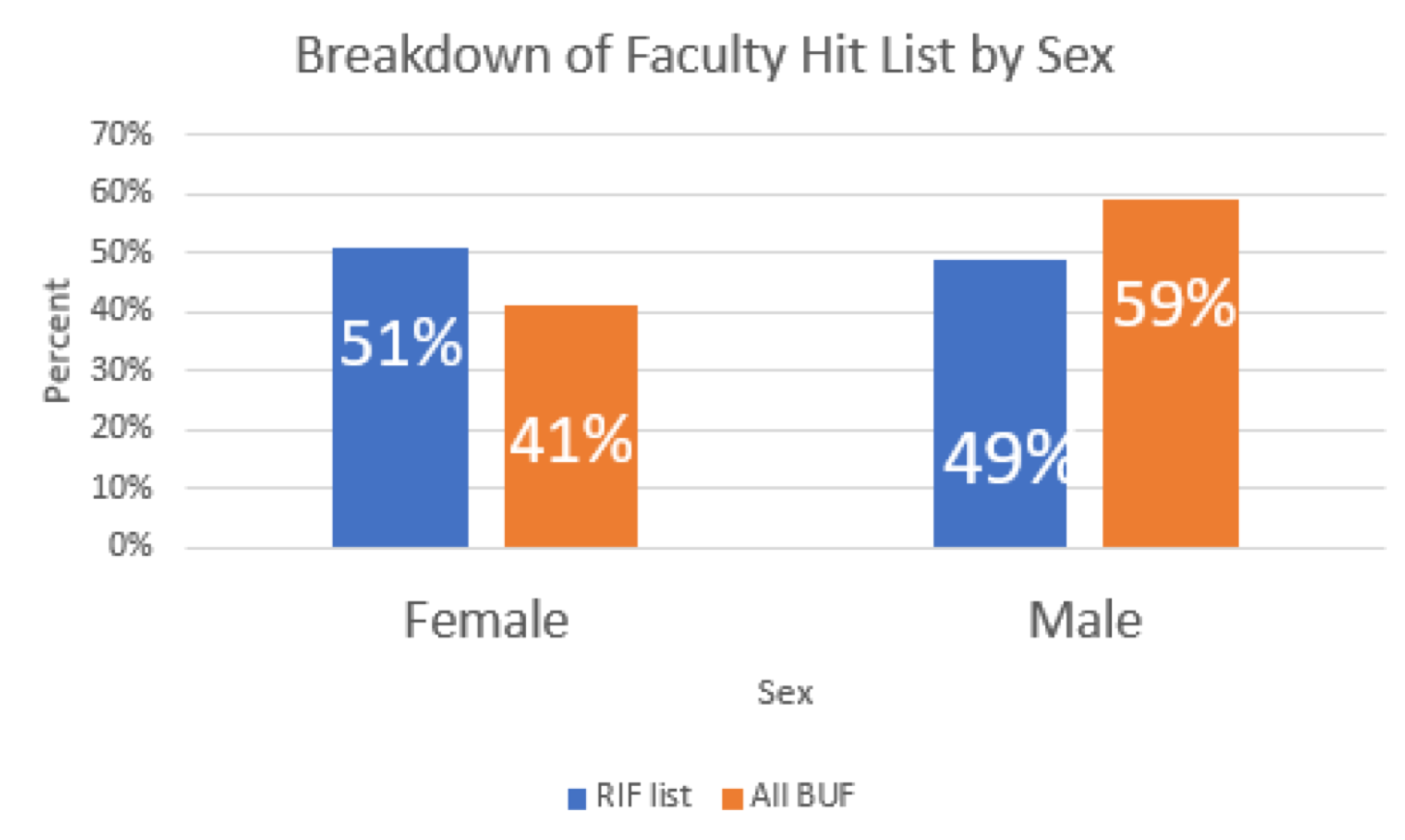By Sue Ramlo
On July 15th, 2020, our worlds turned upside down. Fear-filled discussions about a faculty cut list had been circulating for more than a few months. It seemed as if every faculty member assumed that they were on that list of faculty to be laid off. Faculty were brooding, panicking, and anxious, as if living in the uncertainty of the coronavirus pandemic was not stressful enough already. Our understanding was that a set of faculty would be fired regardless of rank or tenure. The University of Akron (UA) had declared force majeure (FM) mid-May stating that the current financial crisis at the university was due to the COVID-19 pandemic, despite at least a decade of questionable fiduciary practices by the Board of Trustees including the generation of a large amount of debt from a building boom.
Our current contract (which expires on December 31st, 2020) stipulates a process for financial exigency and negotiations which were activated once the university declared FM. A disagreement about the language of the contract regarding the process as a result of UA declaring FM led to the filing of a grievance by the Akron AAUP. The lack of proof for FM, to be provided to the union per our contract, was also part of this grievance. However, the UA administration moved forward, using their interpretation of the process to be used with FM. Their evident belief was that FM allowed the administration to select faculty for termination without due process. During negotiations, the Hit List was top secret. Akron AAUP’s negotiating team (NT) members had to sign a non-disclosure agreement (NDA) to view the list. The union NT was not allowed to share this list with anyone, including their Executive Committee, until 48 hours after the list was approved by the UA Board of Trustees (BOT).
The university administration calls the faculty cut list the RIF (Reduction In Force) list. It is important to distinguish RIF from layoff. A layoff is a temporary, involuntary separation of employment. RIF represents the termination of employment that is permanent. We will call this RIF list the Hit List throughout this piece because, quite frankly, there seems to be a collective feeling among the faculty that Hit List faculty were targeted for various reasons including being outspoken.
Although some faculty chose retirement before the Hit List was voted on by the UA BOT on July 15th, the final list contains 96 bargaining unit faculty members(BUF). The ranks of those on the Hit List include Distinguished Professors as well as Professors of Practice (the highest rank of non-tenure track faculty, NTT) in the midst of 5-year contracts with UA. The UA administration has not shared the criteria that were used to select us for termination, despite numerous requests by the union’s NT. The demographics of the Hit List raise questions about what the criteria were.
Who are the faculty on this Hit List? Are they really the dead wood of the university, as some contend? Well, a quick review of publications and CVs (available on the university’s website at
https://works.bepress.com/experts/university-of-akron/) demonstrates that the faculty on this Hit List are important members of the University. These faculty have published and received teaching awards, are fellows of professional societies, have been journal editors, have been post-docs at well-known institutions like UC Berkeley advise graduate students, run grant funded research, received distinguished awards and have served as presidents of international societies. In some cases, an entire academic program had every full-time faculty member removed via the Hit List. Some departments now have homogeneous faculty as a result of the Hit List.

This graph provides a visual representation of the Hit List based on faculty rank / title. The majority (70%) are tenured faculty members. Note that 62% of BUF are tenured at UA. Those on the Hit List who are non-tenure track (NTT) are at their highest rank, which is accompanied by 5-year appointments and rules for appointment renewal in the chapter’s current contract.

The majority of those on the Hit List are women (51%) even though, according to data provided to Akron AAUP, only 41% of BUF are women.
At this point, while we continue to collect data about those on the Hit List, it seems clear that many of those on the Hit List have previously filed grievances, been outspoken, or challenged UA leadership in various capacities. Additionally, it is important to stress that the Hit List results in broken contracts of NTT faculty as well as rejection of the basic tenets of tenure. We have been given no way to fight this situation other than arbitration, which requires that the current best offer from the university not be ratified by the BUF. In the meantime, the administration has created videos and sent emails to BUF and students pushing for ratification of the contract.
The world is watching what is happening in Akron, Ohio, USA.
Thus, at UA, as we consider ratification of the “last best offer” from the University administration, which includes the Hit List, it is imperative for all to understand the implications of what is at stake in Akron, OH: academic freedom, freedom of speech, gender equity, and justice.
This is a version of the piece originally published in the Blog of Academe Magazine July 26, 2020. If anybody who is on the RIF list believes they were targeted for inclusion due to age, gender, disability or other protected class, please contact Tim Matney at [email protected].
In Solidarity,
The Communications Committee of Akron-AAUP
« Back

